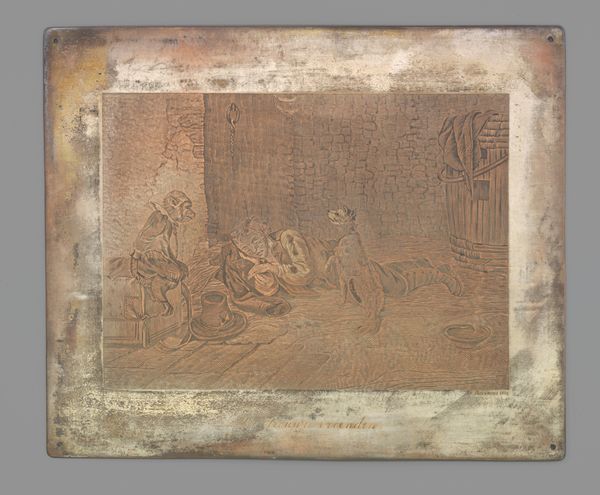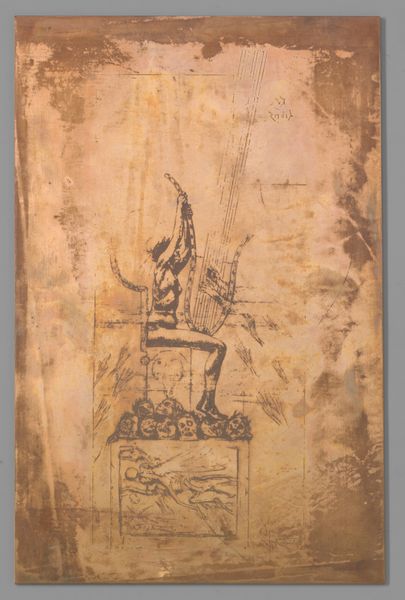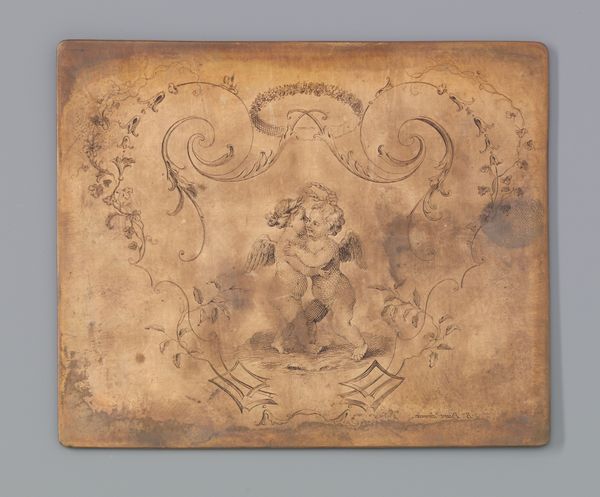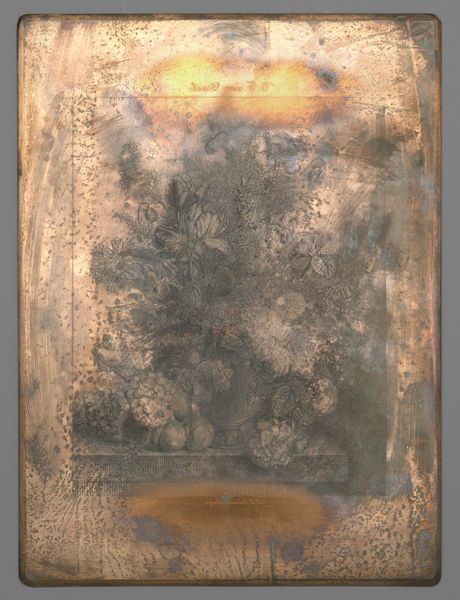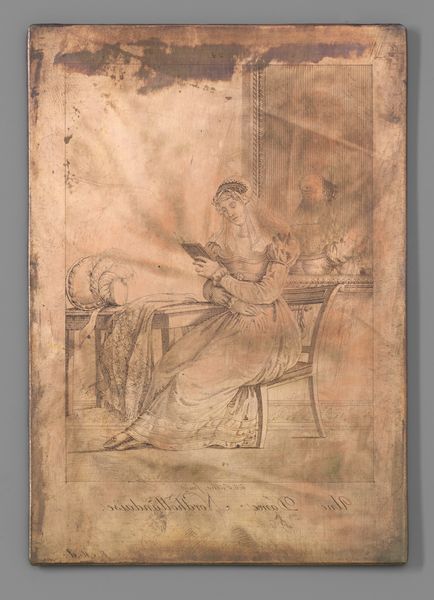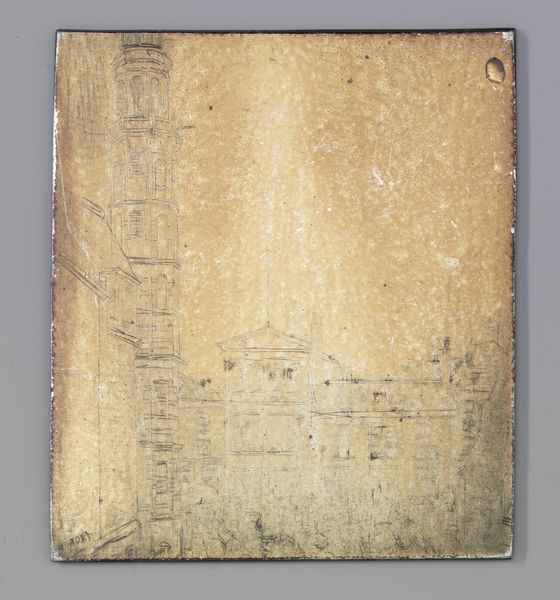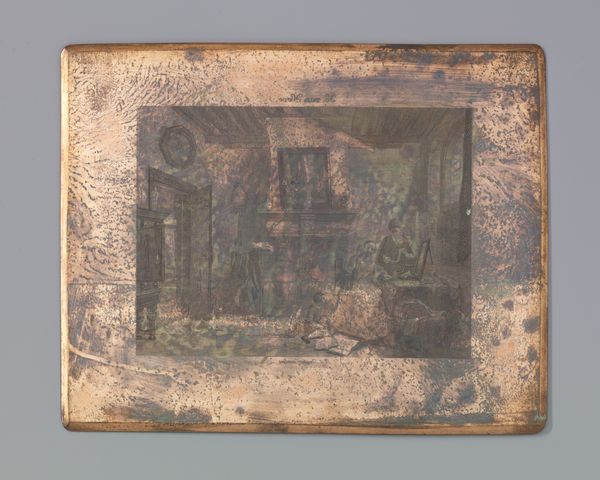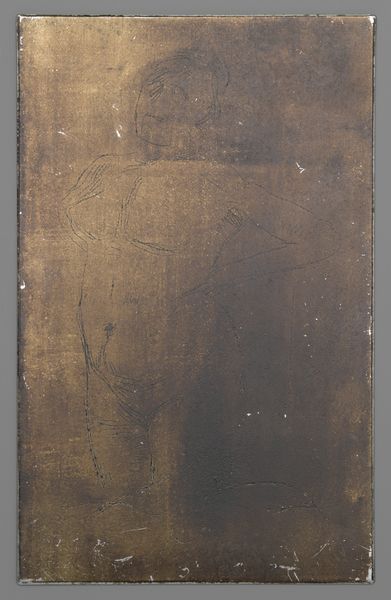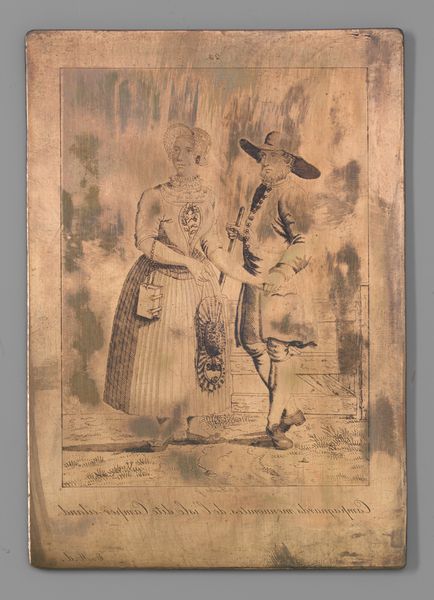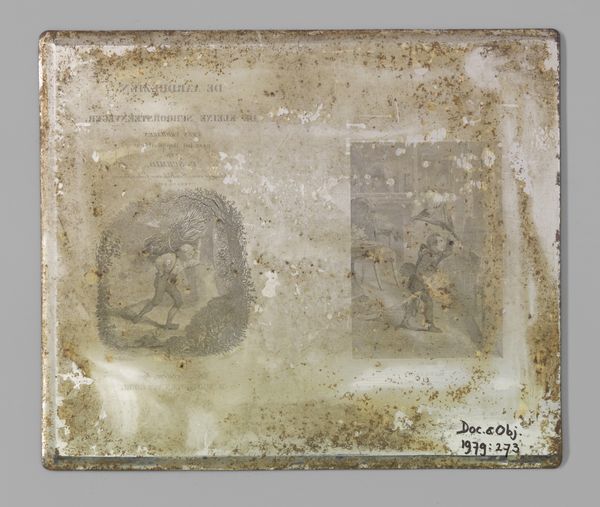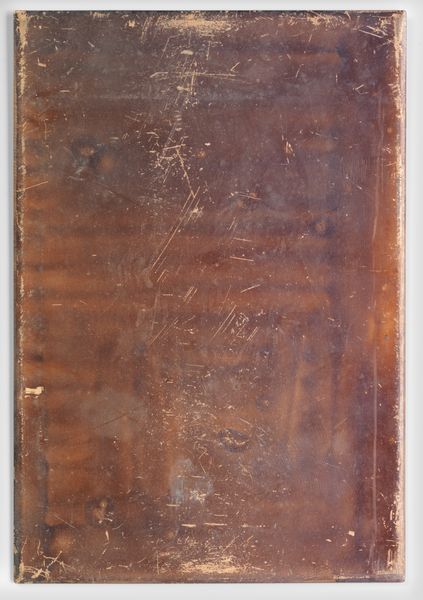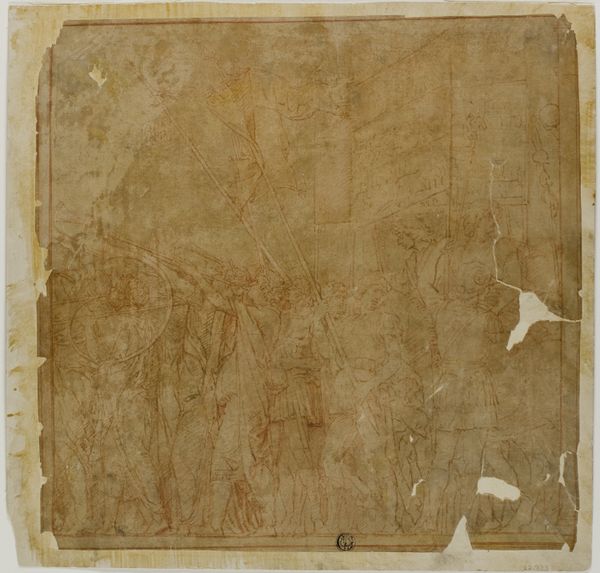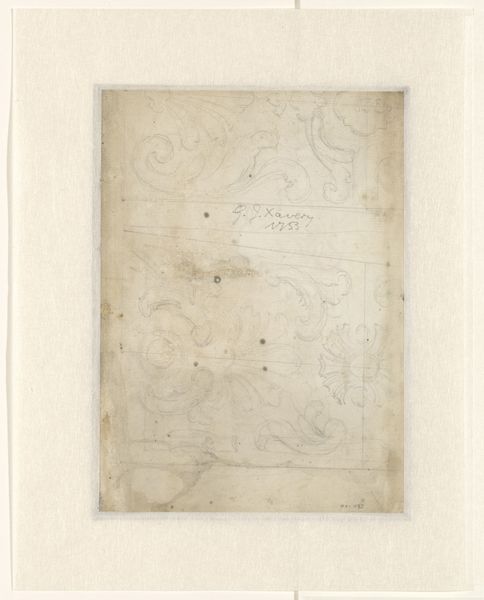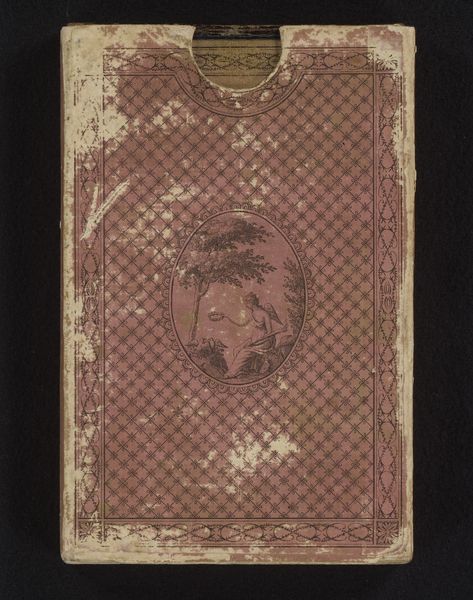
Dimensions: height 120 mm, width 89 mm
Copyright: Rijks Museum: Open Domain
Editor: This is an intriguing piece, an anonymous work from between 1850 and 1910 entitled *Balboekje*, or 'Dance Book.' It appears to be made with mixed media – inks, watercolours and coloured pencils. What immediately strikes me is the use of figures at the top above what seems to be handwritten notations. What do you see in this, and can you say anything more about the figures? Curator: My eyes are immediately drawn to those figures as well! Consider the radiant, almost halo-like light emanating from the male figure playing a stringed instrument. That use of light can function as an iconographic indicator – think of Apollo, muse of music, of artistic inspiration itself. It positions artistic creation as something almost divine. Then look at the woman holding what might be castanets. Do you notice how the whole scene hints at celebration? Editor: Yes, the castanets reinforce that celebratory air. What about the writing below? Does it tell us who made this or why? Curator: The presence of the notations hints at the recording of events, dances maybe, and it also echoes the book form itself, reminding us that objects hold memories. Each mark, each addition to the *Balboekje,* builds layers of meaning. Someone cherished recording these dances, capturing fleeting moments and making them concrete. It's also so wonderfully romantic. It connects artistic imagery to everyday practice. Editor: That’s fascinating, connecting the image to the act of recording and memory keeping, placing art and the everyday in relationship. I hadn't thought of that. Thank you. Curator: Indeed, tracing the cultural memories woven into such images can tell us so much. Consider how we memorialize our experiences today and what symbols we may use.
Comments
No comments
Be the first to comment and join the conversation on the ultimate creative platform.
